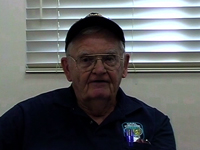|
"I was going to get out [of the Navy] but at that point I felt, If these folks could give their lives for their country, the least I could give was twenty years." (Video Interview, 3:48)
|
|
{
align: 'left'
}
|
Arthur L. Rehme |

Arthur Rehme [2005] | Vietnam War, 1961-1975
Navy
Defense Atomic Support Agency (DASA); USS Thresher (SSN 593); Submarine Squadron Seven (COMSUBRON Seven); Surgical Team Bravo, Amphibious Squadron One (COMPHIBRON ONE)
New London, Connecticut; Norfolk, Virginia; Portland, Oregon; Richland, Washington; Camp Mercury, Nevada; Sandia Base and Los Alamos, New Mexico; Arco, Idaho; Portsmouth, New Hampshire; Pearl Harbor, Hawaii; Chelsea, Massachusetts; Greenville, South Carolina; Jacksonville, Florida; Da Nang, Vietnam
Captain
NY
 |
|
 |
In medical school in 1954, Arthur Rehme expected to be drafted, so he chose to enlist instead, in the Naval Reserves. He volunteered for submarine duty, not realizing that to qualify, he would have to learn everything about the boat's operations. Personally interviewed by Admiral Hyman Rickover, he joined the nuclear program. Rehme helped commission a state-of-the art submarine called the Thresher, but according to Rickover's policy, he could spend only six months aboard any boat. That saved his life when, in 1963, the Thresher went down with all hands, half of them sailors Rehme knew. Rehme had a varied career, including a stint aboard a ship off the coast of Vietnam and treating returning POWs from that war, including John McCain.
|
|

